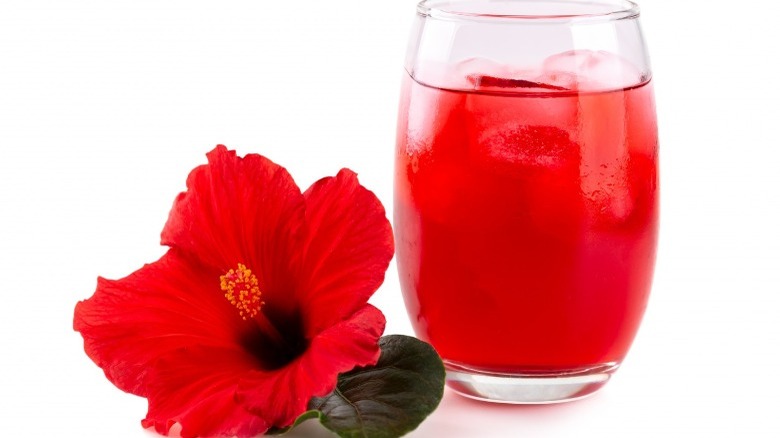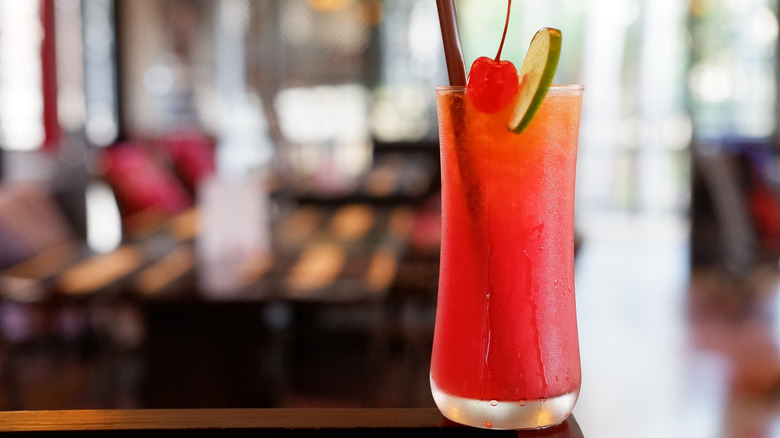Why Red Drinks Are An Important Part Of The Juneteenth Menu
Barbecue and a tall glass of red drink have long been a pairing in soul food, and it's not only because they complement each other's flavors well, according to Atlas Obscura. Their association, which actually dates back many years, lies primarily in their shared pigment, which can be traced back to the bright red hibiscus plant, which is a native species to West Africa (via NPR).
The color red holds a lot of significance in Black culture, stemming from spiritual beliefs in West Africa. These ideas have made their way into many traditional foods, such as Ghanian Red Red, and the use of red palm oil (via Honest Food). Therefore, the red drink that is usually served at soul food restaurants is often the Red Hibiscus Drink (via NPR). The traditional West African beverage made its way across the Atlantic during the slave trade centuries ago, and while it is still enjoyed at Juneteenth celebrations, the term "red drink" has evolved to a more general label over the years, yet it still holds important cultural meaning.
The color pays homage to transatlantic slaves
Though over the years, the term "red drink" has evolved to include drinks such as Kool-Aid, it still has important cultural roots. Despite hibiscus being native to West Africa, "liquid soul" was made in the Americas in the 1700s. According to First We Feast, enslaved West Africans in Jamaica harvested the sorrel plant, with which they made their own version of red drink. But the drink took on a new meaning in America's early history, as it became known as a symbol of the bloodshed of slaves during the transatlantic slave trade (via Black Restaurant Weeks).
People began making their own versions of red drink over the years while keeping history in mind. Big Red Soda became a popular variation in Waco, Texas, and is commonly paired with barbecue and other types of soul food (via Texas Hill Country). Now, the term "red drink" is used to encapsulate a multitude of drinks, ranging from strawberry soda to sorrel teas (via Smithsonian Magazine). But even over the years, its cultural significance has not dimmed one bit.

